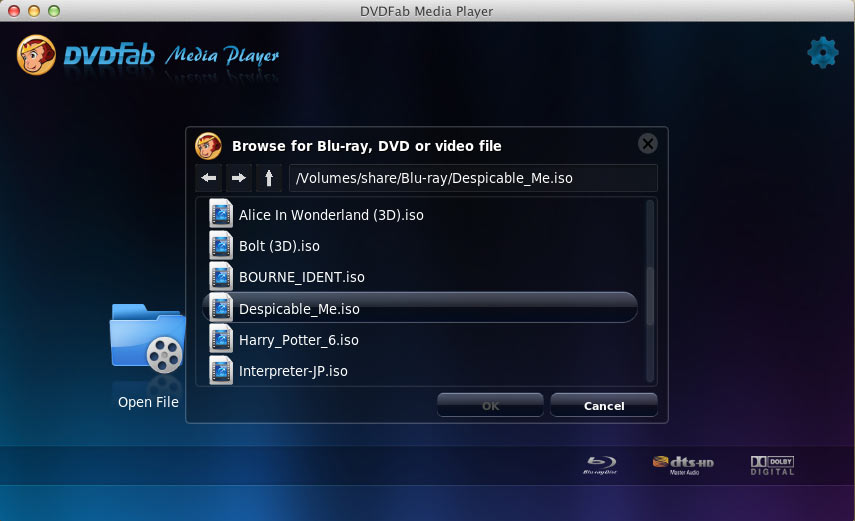How to Make a Bootable USB Stick from an ISO File on an Apple Mac OS X fa icon='long-arrow-left' Back to all posts fa icon='pencil' Posted by Lewan Solutions fa icon='calendar' February 10, 2012. Reader Forrest Bourke seems lost in the woods in regard to making disk images compatible with Windows. He writes: How do I make an ISO image? Hybrid image (HFS+/ISO/UDF): This disk image is a combination of disk image formats and can be used with different file system standards, such as HFS, ISO, and UDF. Click Save, then click Done. Disk Utility creates the disk image file where you saved it in the Finder and mounts its disk icon on your desktop and in the Finder sidebar.
Looking for the best ISO to USB burner for Mac? It's possible, but ISO is not native file type in Mac OS X or macOS environment, so you need to use workaround methods or employ a third-party ISO burning utility for Mac to get this done. This article covers three ways to burn ISO to USB stick on a Mac computer, powered by macOS Mojave, High Serria and earier Mac OS X systems.
The first thing you need to know is that you can't use an ISO disk image file on a Mac, since Apple primarily uses the DMG format. However, if you merely want to burn it to a disk, that's definitely possible. The only thing you can't do is run an ISO file on an Apple computer. Let's look at the various ways to burn ISO to USB on a Mac machine.
Part 1: How to Burn ISO to USB With Mac Terminal Software
Terminal is Apple's command line equivalent of Command Prompt in Windows and Terminal in Linux. Using this command line utility, you can burn an ISO file to an external DVD or USB disk. If you did not t have any experience with text command, then this is not recommended because it is too risky to damage the local disk with wrong input. Terminal allows you to do several system-level operations, so don't input anything other than the commands specified in the process outline shown below:
Step 1: Click Terminal icon from the Dock. Or Go to the Applications folder on Mac and find the Terminal app in Utilities folder.
Windows For Mac Iso
Step 2: Copy the ISO file in a convenient location so your command doesn't have to be too long. Saving it to desktop or downloads folder is usually a good idea. Make sure you remember the name of the ISO file because it will be used in the command.
Step 3: If your ISO file is in your Desktop, then run the following command (press Enter after typing the command): cd desktop
Step 4: Now run the following command (hit Enter after typing): hdiutil burn filename.iso
Step 5: Once you run the command, your ISO file will be burned to the USB drive in your default optical drive. If you haven't inserted a disk, you will be prompted to do so. There is no need to run the command again after inserting the USB.
Cons:
- Dangerous and not safe for beginners .
- Sharp learning curve.
- Bad support for USB 2.0 device.
- USB not bootable.
If you want to avoid any kind of command line work and if you're running one of the newer versions of macOS, then it's better to use a third-party software like the one described in Part 2 below.

Part 2: Easily Burn ISO to USB on Mac via UUByte Software (Bootable USB Creator)
Sofware being powered by a graphics user interface are always welcomed because of user friendly operation. So the second suggestion in here is UUByte ISO burner software called ISO Editor for Mac. It is popularly regarded as the best ISO burning software for Mac. It allows you to burn, extract, edit, copy and create ISO almost as if it was a native file format on Mac. The utility has been fully tested on a wide range of storage media brands as well as all versions of macOS and Mac OS X.
The biggest advantage is that you do not need any technical expertise whatsoever to use this software. It is highly intuitive, and in a matter of minutes you can burn your ISO to USB or DVD. More importantly, the USB is bootable in default. This flexibility makes it the most user-friendly Mac app for handling ISO disk images in a number of ways. The next section shows you how to easily and quickly burn any ISO file to a disk or drive to create bootable USB on your Mac.
Key Features of ISO Editor for Mac
- Designed by great UI.
- Powerful Burning options.
- Able to make bootable USB or DVD.
- Support the latest macOS Mojave and High Serria.
- Include other useful ISO tools such as edit, extract and create.
Step 1: Download UUByte ISO Burner for Mac
Download and install ISO Editor for Mac to your computer and launch the program. Click on the Burn module on the first page, which will take you to the ISO burning utility.
Step 2: Insert USB Drive on Mac and Import ISO Image
Insert a USB flash drive into your Mac. Select the ISO file to be burned to the media. If you want a different partition style or file system, make those changes on this page. If you don't know what they mean, leave them in default mode.
Step 3: Start Burning ISO to USB on Mac
Click Burn and the ISO file will be burned to USB drive in around 5 minutes. Please wait and be patient. Make sure the computer not going into sleep mode during the burning process.
UUByte ISO Editor for Mac boasts a 95% burn success rate, so no wasted disks or wasted time when you use this software. The software's reliability, flexibility and speed have made this the go-to Mac application for handling ISO disk image files.
Part 3: Disk Utility - The Default ISO to USB Buner (Solid for Old Macs)

Disk Utility is a built-in tool that comes with Mac OS X and macOS. Using this function, you can easily burn your ISO to a disk after mounting it. Disk Utility is primarily meant to view and repair hard drives and other drives, but also has added functionality. Follow the process below to get your ISO burned to a writable DVD or CD.
Step 1: Go to the Applications folder using Finder or by clicking the shortcut on the bottom right of your screen. From there, go into the Utilities folder and click on Disk Utility to launch the app.
Step 2: Open your ISO file and mount it as a virtual drive. This is done automatically when you click on File >Open Disk Image… in the top menu.
Step 3: When you see your ISO file in the left panel, that means it was mounted properly. You can now insert an USB and click on the Burn option to burn the target ISO file to the USB drive.
This method is only meant for OS X 10.10 and earlier versions. With Mac OS X 10.11 El Capitan, Apple removed the ability to burn ISO to a USB. If you have one of these higher versions, you can try the above methods.
Summary
To be honest, Burning ISO to USB was not challenging at all on Mac in the past. But the situation was changed since the release of macOS. Many apps was not supported or updated to Mojave or High Serria. So for the new Mac computer, UUByte ISO Editor is the best option out there in 2019.
In this article, I will show you how to create macOS Big Sur ISO image file. macOS Big Sur ISO is for Installing macOS Big Sur on VMware or Virtualbox. We have already created a step by step guide on how to install macOS Big Sur on VirtualBox and VMware. You need to be on a real Mac (aka Macintosh) or have macOS installed as VM.
If you don’t have a Macintosh then I recommended use the following guide and install macOS Catalina on VMware.
Steps to Create macOS Big Sur ISO File
- Download macOS Big Sur From Apple
- Create & Mount an empty Disk Image using hdiutil
- Use the Createinstallmedia command to make the disk image bootable with macOS
- Unmount the Disk Image
- Covert the Disk Image to ISO image
#1.1. There are 2-ways to download macOS Big Sur from Apple. If you have a developer account then visit developer.apple.com. Click on Discover > macOS > Download. Sign in with your developer account then scroll down and click the Install Profile button for macOS Big Sur Beta install. if you don’t a developer account then download macOS Beta profile from betaprofiles.com.
Download macOS Beta Access Utility
#1.2. After downloading the macOS Beta Access Utility.dmg open it. When the access utility window opens, Right-click on macOS Beta AccessUtility.pkg then click Open > Continue > Agree > Install > Enter your Password > Install software > Close.
- Open macOS Beta Access Utility
- Install macOS Beta Access Utility
#1.3. Finally, the Software Update window will open then you can start to download the macOS Big Sur directly from Apple’s server. So click Upgrade Now and wait for the download process to finish. It may take 10-20 minutes depending on your internet speed.
- Download macOS Big Sur
- Downloading macOS Big Sur
#1.4. When the download of macOS Big Sur is finished, make sure to quit the installer by click on Install macOS Big Sur Beta > Quit Install macOS or pressing Command + Q.
#2.1. Once macOS is downloaded then Open Terminal and type the following command to create an empty disk image. Type your password when prompted.
#2.2. Next, Mount the disk image to /Volumes/BigSur.
#3. Now will use the Createinstallmedia command to make the disk image bootable with macOS Big Sur.
Make Iso For Mac Download
#4. Unmount the Disk Image which is formatted from BigSur to Install macOS Beta and bootable with macOS Big Sur ISO image.
#5 Covert and rename the Disk Image to ISO
Note: running the rm -rf commands will do the cleanup and remove all the unnecessary file (disk image) from the /tmp folder. Although if you don’t do it then it will be automatically be removed after a while.
After running all the commands properly you should end up with a macOS Big Sur ISO image file on your Desktop.
Summary
That’s all about how to install create macOS Big Sur ISO image file. We covered the following:
Create Iso Mac
- Download macOS Big Sur From Apple
- Create & Mount an empty Disk Image using hdiutil
- Use the Createinstallmedia command to make the disk image bootable with macOS
- Unmount the Disk Image
- Covert the Disk Image to ISO image
Make Iso For Mac Iso
If I left out something and didn’t mention please let me know by commenting down below this post. We have lots of new posts related to macOS Big Sur so stay up to date with us.


Comments are closed.